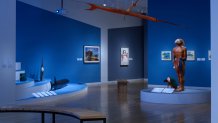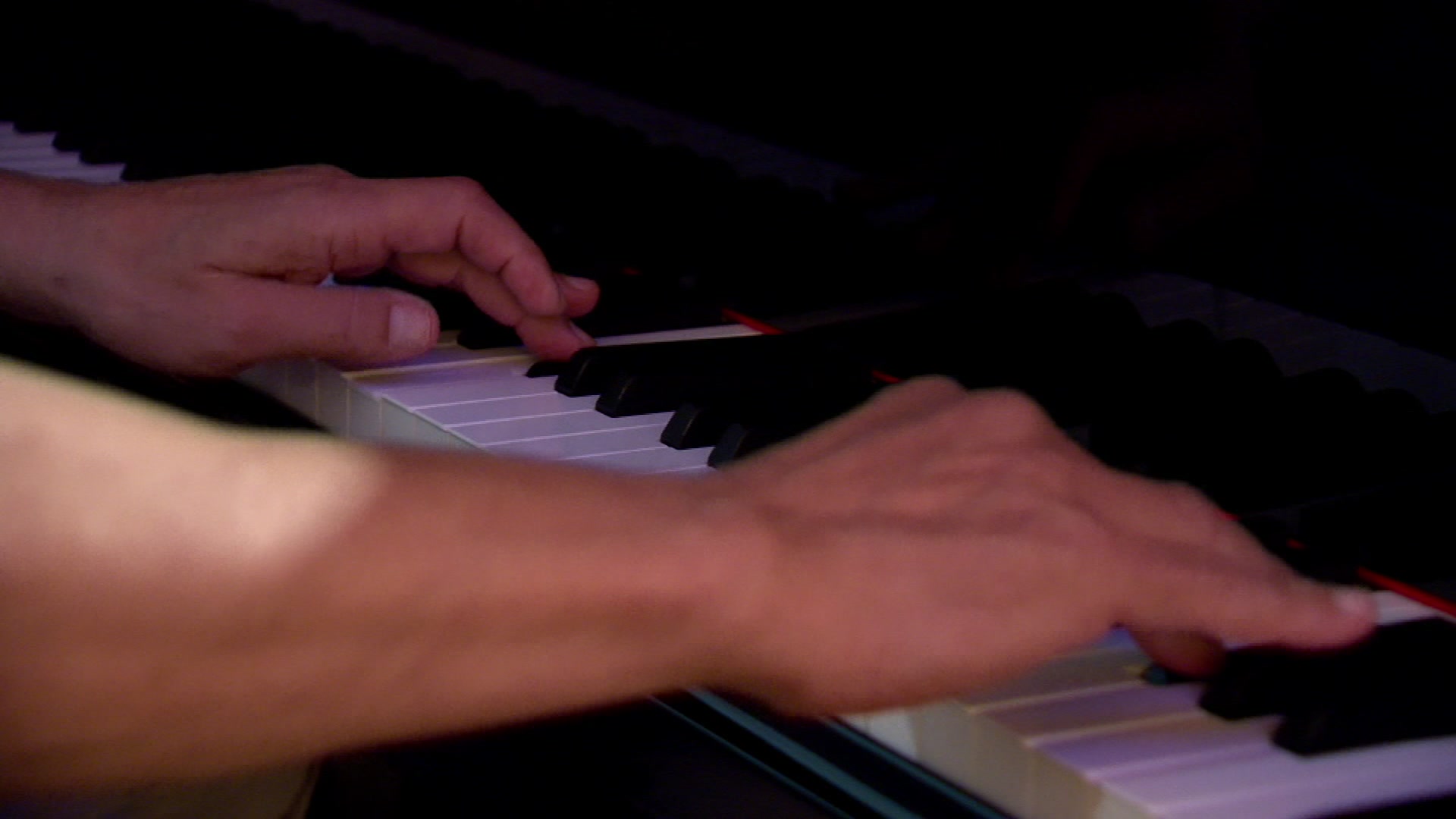
In the 1960s, Marisol was the glamorous muse and icon of the Pop art world, probably more famous than her friend, Andy Warhol. Today, she is little known. Nine years after her death, Marisol: A Retrospective reveals the depth of this enigmatic artist’s body of work, created over nearly 60 years. The exhibition is making its last stop on its tour at the Dallas Museum of Art, on view through July 6.
Born as María Sol Escobar in 1930 to affluent Venezuelan parents in Paris, Marisol spent her childhood traveling between Venezuela, the United States and Europe. After her mother committed suicide when Marisol was 11 years old, the artist fell silent. Even once she began to speak again in her early twenties, Marisol remained a woman of few words, creating an enigmatic mystique that would define her public persona.
Watch NBC 5 free wherever you are
After attending Académie Julian and the École des Beaux-Arts in Paris, Marisol moved to New York as a 20-year-old living off an allowance from her father, intending to study and work as an artist. She studied at the Art Students League and the Hans Hoffmann School of Fine Art and planned on going to a university. That never happened.
Get top local stories delivered to you every morning with NBC DFW's News Headlines newsletter.
“She said in the end that although she anticipated going to university, the museums of New York and the libraries of New York were her university,” said Cathleen Chaffee, Charles Balbach Chief Curator of the Buffalo AKG Art Museum and curator of this exhibition.
Marisol valued museums and she left her TriBeCa loft and the extensive collection and documents within its walls as a bequest to the Buffalo AKG Art Museum following her death in 2016. This retrospective exhibition, featuring 250 artworks and documents, is drawn from this bequest as well as loans from the Museum of Modern Art, New York; the Guggenheim Abu Dhabi and the Art Institute of Chicago. The Dallas presentation is curated by Dr. Anna Katherine Brodbeck, the Dallas Museum of Art’s Hoffman Family Senior Curator of Contemporary Art.
Marisol’s early sculptures, created in the 1950s, drew upon American folk art and pre-Columbian sculpture. Critics took notice of her beauty as much as her art and frequently focused on her style. They also assumed that because she was Latin, she had some sort of privileged access to this particular style. Her response was defiant.
“She would later write a critic,” Chaffee explained, "'You call me folk because you are prejudiced against my Latin American background. Folk you!’”

Unable to recognize herself in the media, she retreated from the art world in 1958, moving to Rome. When she returned to New York a couple of years later, she attended a party hosted by a friend whose wife was a hat maker. She found inspiration in some old hat forms she noticed at the party.
The Scene
“Just that simple thing – these hat forms – became the core, the jumping off point for all the work she would make in the 1960s,” Chaffee said.
As one of the most photographed and most written about women in the art world, Marisol created Self-Portrait, featuring multiple heads, legs and feet.
“At the core of this work is this sense of self that is de-centered, multiple, is not necessarily unique or singular, the sense of self that is perhaps something that is constantly being created as opposed to a narrative throughline from birth to death," Chaffee said.
Marisol shared a studio space with a photographer. She went through his trash, collecting discarded images of the typical American life and developed a catalogue of weddings, families, and babies. Baby Boy and Baby Girl are inspired by these photographs, a sly commentary on family, femininity and society.
“What she is doing is distilling this American form of self-representation through photography,” Chaffee said. “It is a very American version of Pop art that no one else is really taking up in the same way.”

The exhibition showcases one of Marisol’s definitive works, The Party. It is her commentary on isolation, disconnection, and the shallowness of high society events.
“It shows 15 figures, all of whom have Marisol’s face in one way or another, at a party that is perhaps the most fun to look at but the least fun to go to,” Chaffee said.
Disenchanted with the violence of war in the 1960s, the artist retreated again, taking up scuba diving. For someone who embraced silence as a child, the ocean is a sanctuary.
“This is not just a hobby. For her, it becomes a central part of her identity in the 1970s,” Chaffee said. “The silence underwater that she found was really impactful to her. She found a great sense of peace underwater and spending time with animals.”

Her art of the early 1970s meditates on the connection between violence and the animal kingdom, especially threatened species. Throughout the decade, she created work representing the time she was living and working in, sharing her experience as a woman. Some of the works show bodies merging with implements of violence, while other works are confessional.
“She’s thinking about war, and she has quite an anti-war stance. She’s thinking about the violence that she’s seeing around her in American culture,” Chaffee said.
While not receiving the critical acclaim she did in the 1960s, Marisol made art throughout her life, collaborating with dance companies like the Martha Graham Dance Company and creating public monuments. Even while suffering from Alzheimer’s disease in the last years of her life, she continued to draw.
In the silence of death, Marisol speaks again through her art.
Learn more: Dallas Museum of Art



